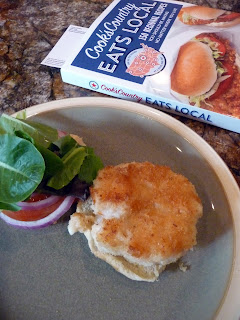My CSA challenge has really been a challenge. I have to say that the true challenge came when I was confronted with turnips ... and turnips ... and turnips. They came with every shipment. I had more turnips than I knew what to do with. The reason for my situation came not only due to the number of turnips, but also from the fact that I have rarely cooked with the root vegetable.
Sure, I could have boiled them, pureed them into a smooth nothingness, and, voila, an alternative to mashed potatoes or with mashed potatoes. And only that. I have never cooked with turnips. So I needed to come up with another use for them. So, I did what I often do and that is to consult the Internet. I searched for various recipes for turnips. There a lot of recipes, as there are for pretty much any ingredient. However, there was one recipe that caught my eye, because it called for a combination of ingredients which appealed to my stomach ... turnips and pears. The recipe was from Bon Appetit, but I decided to give it my own twist.
The twist involved combining the turnips and pears with turkey, which works on so many levels. Turkey is a very good protein to work with because its its flavor is complementary to so many fruits, vegetables and starches. This goes well beyond cranberries and potatoes. Both the turnips and the pears paired very well with the turkey. For this dish, I used a turkey thigh, rather than the breast or cutlets. The reason is the preparation. Given the top of the stove treatment, which involves higher heat over a shorter period of time, the added fat content in the turkey thighs helped to keep the meat moist.
This was a very good dish for turnips, and a great alternative to simply mashing them like potatoes. While my plating still needs some work, this is the type of dish that I think could look fancy enough to appear on restaurant menus.
The twist involved combining the turnips and pears with turkey, which works on so many levels. Turkey is a very good protein to work with because its its flavor is complementary to so many fruits, vegetables and starches. This goes well beyond cranberries and potatoes. Both the turnips and the pears paired very well with the turkey. For this dish, I used a turkey thigh, rather than the breast or cutlets. The reason is the preparation. Given the top of the stove treatment, which involves higher heat over a shorter period of time, the added fat content in the turkey thighs helped to keep the meat moist.
This was a very good dish for turnips, and a great alternative to simply mashing them like potatoes. While my plating still needs some work, this is the type of dish that I think could look fancy enough to appear on restaurant menus.
TURKEY WITH TURNIP AND PEAR
Adapted from recipe by Bon Appetit
Serves 4
Ingredients:
3 tablespoons olive oil, divided
1 turkey thigh, about 1 1/2 pounds, cut into
four even sized pieces
Kosher Salt
Freshly ground black pepper
1 large onion, thinly sliced
1 medium pear, peeled, cored and chopped
1 medium turnip, peeled and chopped
4 garlic cloves, finely chopped
1/2 cup dry white wine
1 teaspooin fresh thyme leaves, plus more for serving
1/2 cup salted, roasted macadamia nuts, chopped
Directions:
1. Brown the chicken. Heat 1 tablespoon of oil in a large skillet over medium-high heat. Season turkey with salt and pepper and cook, skin side down, until skin is browned and crisp 10-12 minutes. Transfer turkey to a plate.
2. Prepare the sauce. Heat remaining 2 tablespoons of oil in same skillet over medium high heat. Add onion, pear, turnip and garlic, season with salt and pepper, and cook, stirring ocassionally until pear and turnip are soft and starting to turn golden brown, about 15-20 minutes. Carefully add wine and thyme, then return chicken to skillet, skin side up. Cook until wine is almost completely evaporated and turkey is cooked through, about 8-10 minutes.
3. Complete the dish. Plate the dish and serve topped with macadamia nuts.
ENJOY!





























